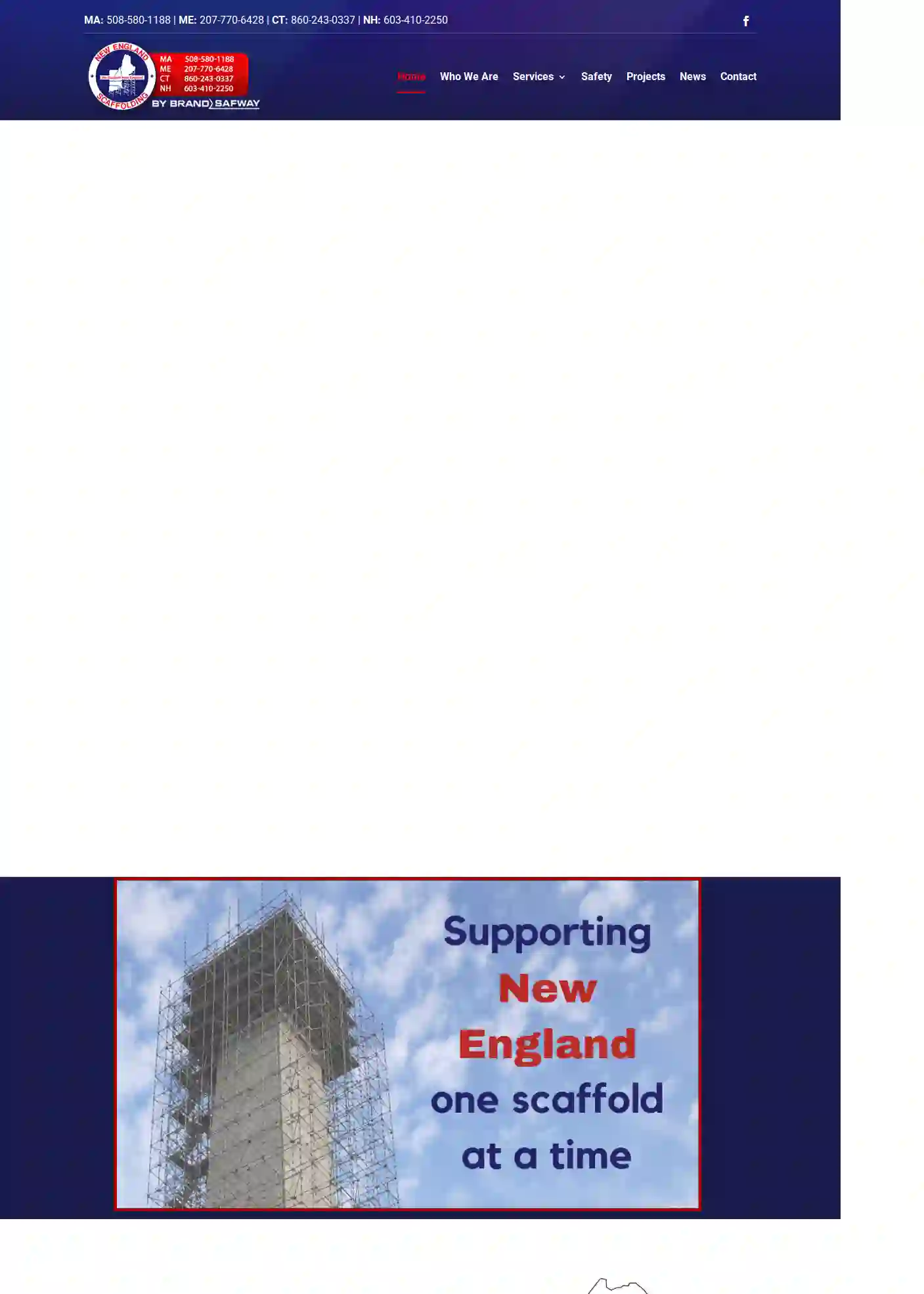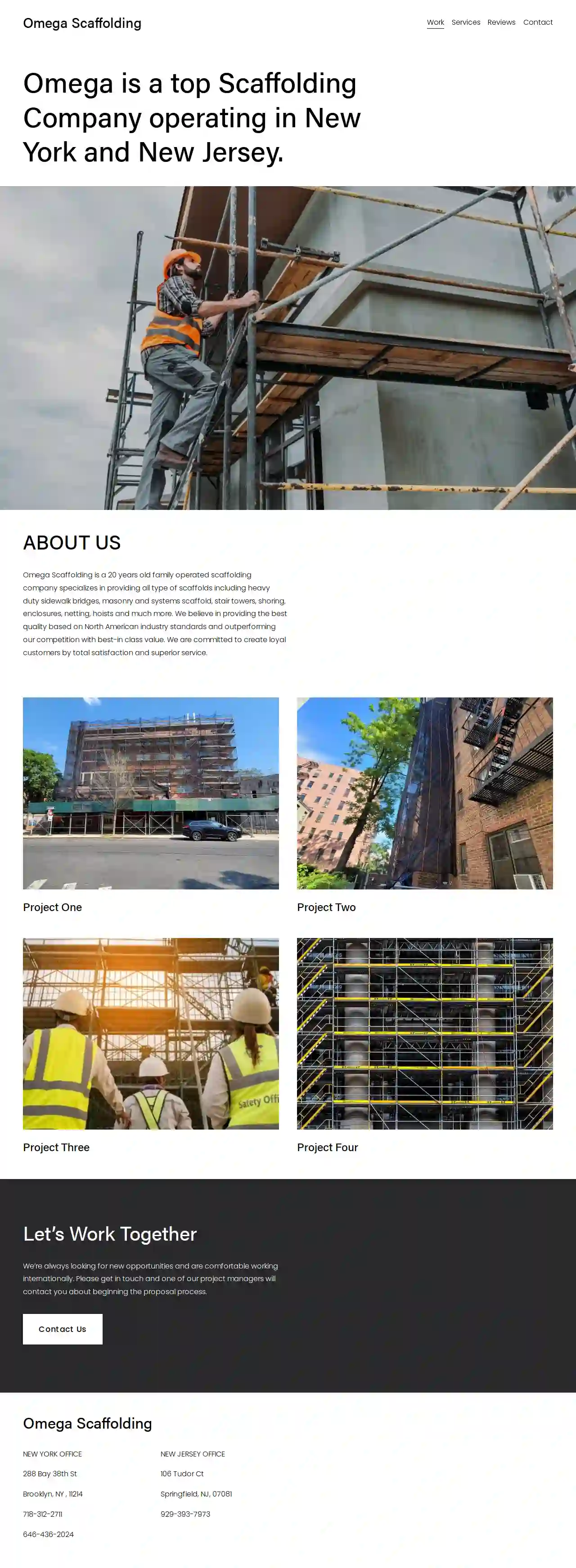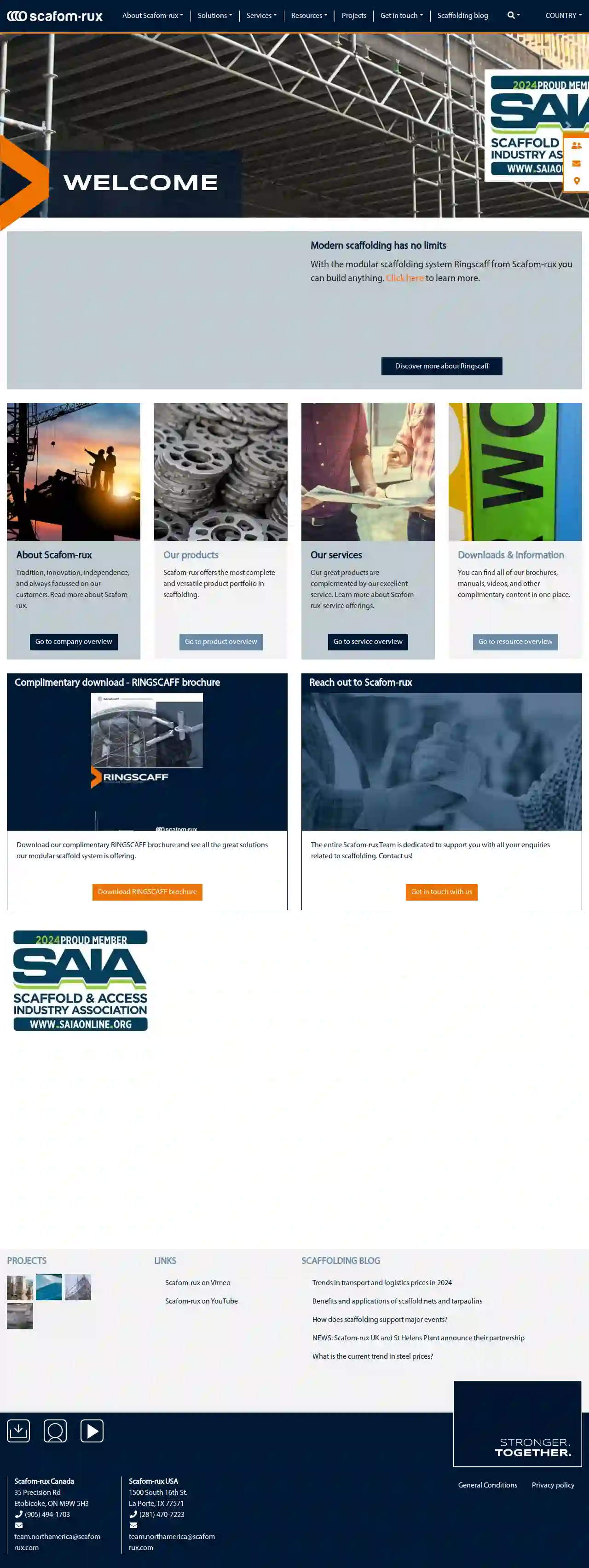Scaffolding Rental Argyle
Best Scaffolding Hire in Argyle
Get up to 3 Affordable Scaffolding Rental quotes for your project today! Compare profiles, reviews, accreditations, portfolio, etc... and choose the best service.

Southwest Scaffolding & Supply
4.840 reviews5030 Dexham Rd., Ste. 101, Rowlett, 75088, USWelcome to Southwest Scaffolding & Supply, your premier source for scaffolding rental and sales. With over 15 years of experience, we provide top-quality scaffolding solutions for various industries. Our team of experts is dedicated to helping you find the right scaffolding equipment for your project. We offer a wide range of scaffolding products, including scaffolding sets, snap-on scaffolding, scaffold frames, and more. Our mission is to provide exceptional customer service, ensuring your satisfaction with our products and services. Contact us today to learn more about our scaffolding solutions and how we can help you achieve your goals.
- Services
- Why Us?
- Accreditations
- Our Team
- Gallery
Get Quote
New England Scaffolding
3.912 reviewsBloomfield, CT, 522 F Cottage Grove Rd., 06002, USNew England Scaffolding is a leading provider of scaffolding solutions, offering a range of services including scaffolding, shoring, suspended scaffolding, containment, temporary fencing, and debris chutes. With offices in Massachusetts, Maine, Connecticut, and New Hampshire, they prioritize safety and customer satisfaction. Their team of experienced professionals ensures that projects are completed efficiently and effectively, adhering to the highest safety standards. New England Scaffolding is dedicated to delivering top-quality services and building long-lasting relationships with clients.
- Services
- Why Us?
- Accreditations
- Our Team
- Testimonials
- Gallery
Get Quote
Omega Scaffolding Ltd
52 reviewsBrooklyn, NY, 288 Bay 38th St, 11214, USOmega Scaffolding is a top Scaffolding Company operating in New York and New Jersey. Omega Scaffolding is a 20 years old family operated scaffolding company specializes in providing all type of scaffolds including heavy duty sidewalk bridges, masonry and systems scaffold, stair towers, shoring, enclosures, netting, hoists and much more. We believe in providing the best quality based on North American industry standards and outperforming our competition with best-in class value. We are committed to create loyal customers by total satisfaction and superior service.
- Services
- Why Us?
- Testimonials
- Gallery
Get Quote
Swing Staging NJ
25-20 Borden Avenue, Long Island City, 11101, USSuspended Scaffolding Experts Swing Staging has more than 5 decades of experience as the industry leader in suspended scaffolding sales, rentals and service in the NY Metro area. We are a one-stop shop for everything suspended scaffolding. We carry major brands like Tractel, SkyClimber, PowerClimber, Beta Max and Spider equipment. We have a wide variety of suspended scaffolding solutions to choose from, depending on your needs. We occupy more than 100,000 square feet of warehouse space full of equipment, ready to go for sale or rental. Pipe Scaffolding Swing Staging carries a wide variety of pipe scaffolding equipment. We have a complete line-up of walk-thru frames, masonry frames, ladder-type frames and systems scaffold. We also carry sidewalk bridging materials from header beams, junior beams, bridge legs and cross braces. Visit us at our warehouse and see our current inventory. Hoist Service Swing Staging offers scaffolding hoist/motor repair and certification services for customers and competitors alike. We employ more than a dozen certified mechanics to perform those timely repairs at competitive prices. We also keep stock of more than 4,000 different parts for 40 types of hoists. Our shop is equipped with the latest test equipment to make sure your hoists are DOB compliant. Swing Staging Scaffolding Rentals Any scaffolding company can rent you scaffolding equipment for your job. But will they be there to back you up? Swing Staging is known for our superior customer services such as 24-hour emergency service; the fact that we personally service our own equipment as well as that of our competitors and our dedication to providing the peace of mind your job requires makes us stand out from the rest. We have partnered with some of the best names in the scaffolding rental business, known for their quality and dependability Spider®, Reimann & Georger, Corp., Honeywell®, SkyClimber®, Louisville® Ladders, BetaMax Inc, Chutes International™, Tractel®, Winsafe Corp, Gemtor, and All Seasons Equipment (ASE). This means we can provide our clients with the finest scaffolding rental or purchases.
- Services
- Why Us?
- Gallery
Get Quote
Springs Contractor Supply
123 Main St, Colorado Springs, 80909, USBill's Equipment & Supply, Inc. is a family-owned and operated business in the Pikes Peak region, providing equipment rental, sales, and service since 1954. They offer a wide variety of equipment for contractors and homeowners, with three locations to ensure convenient access. Their friendly, expert staff provides start-to-finish support, saving customers time and money. They also offer maintenance and repairs, with mobile or in-shop services available. Bill's Equipment & Supply has received numerous positive reviews for their exceptional customer service, competitive prices, and wide selection of equipment.
- Services
- Why Us?
- Accreditations
- Our Team
- Testimonials
- Gallery
Get Quote
Sunbelt Rentals Scaffold Services
2301 W Interstate 20, Grand Prairie, 75050, USSunbelt Rentals is a leading equipment rental company with a wide range of equipment and tools for various industries. With a strong commitment to customer satisfaction, Sunbelt Rentals provides high-quality equipment and exceptional service to its customers. The company has a large inventory of equipment, including aerial work platforms, scaffolding and ladders, cranes and boom trucks, electric scissorlifts, low-level access equipment, manlift articulating and straight boom lifts, and mast boom lifts. Sunbelt Rentals also offers a variety of services, including equipment rental, sales, and maintenance. The company has a strong presence in the United States and Canada, with multiple locations across both countries. Sunbelt Rentals is dedicated to providing its customers with the best possible experience, and its team of experts is always available to help with any equipment needs.
- Services
- Why Us?
- Accreditations
- Our Team
- Testimonials
- Gallery
Get Quote
Scaffold Solutions, Inc.
3.56 reviews2200 Federal Rd, Houston, Texas, 77015, USWho We Are Scaffold Solutions, Inc. is a family owned and operated full service scaffold provider that has been servicing the Greater Houston Area for over 20 years. Founded in 1998 by John Whigham Sr, Scaffold Solutions has always been dedicated to quality, safety, and reliability. We look forward to serving you! Our Values At Scaffold Solutions, Inc our core values drive every decision we make. These are the values that make us stand out. Ownership - To take ultimate responsibility for the effects of our actions AND inactions. Integrity - To do what we say we are going to do when we say we are going to do it. Consistency - To always provide the best products and services on time, every time. Boldness - To have curious, flexible, innovative minds to be able to adapt quickly. Bias For Action - To favor action over inaction whenever possible.
- Services
- Why Us?
- Our Team
- Testimonials
- Gallery
Get Quote
Scafom USA
58 reviewsEtobicoke, ON, 35 Precision Rd, M9W 5H3, USScafom-rux is a leading provider of scaffolding solutions, offering a wide range of products and services designed to meet the needs of various industries. With a strong focus on tradition, innovation, independence, and customer-centricity, Scafom-rux has established itself as a reliable partner for scaffolding requirements. The company's commitment to excellence is reflected in its comprehensive product portfolio, which includes modular scaffolds, swing stages, shoring solutions, props, and accessories. Additionally, Scafom-rux provides a variety of services such as scaffold and swing stage rental, technical support, and training seminars, ensuring that clients receive comprehensive support throughout their projects. Scafom-rux operates globally, with offices in Canada and the USA, and serves clients across multiple sectors.
- Services
- Why Us?
- Accreditations
- Gallery
Get Quote
Scaffolding- TNT Equipment Co Inc.
51 reviews6677 Broughton Ave., Columbus, 43213, USTNT Equipment Company is a leading provider of construction equipment rentals, sales, and services. With a wide range of products, including mast climbing and conventional scaffolding, Gradall & JLG rough terrain forklifts, EZ Grout mixers and grout placement units, and many types of construction equipment, TNT Equipment Company is dedicated to helping construction professionals get the job done efficiently and effectively. At TNT Equipment Company, we pride ourselves on our commitment to quality, innovation, and customer satisfaction. Our team of experienced professionals is dedicated to providing exceptional service and support to our customers, ensuring that they have the right equipment and expertise to complete their projects on time and on budget.
- Services
- Why Us?
- Accreditations
- Gallery
Get Quote
BrandSafway LLC Corpus Christi
3.325 reviews1234 Access Road, Corpus Christi, 78401, USBrandSafway is a leading provider of access solutions, including scaffolding, aerial work platforms, and forming and shoring. With a strong commitment to safety, quality, and customer satisfaction, BrandSafway offers a wide range of services tailored to meet the unique needs of clients across various industries. Their team of experienced professionals is dedicated to delivering innovative solutions that enhance efficiency and productivity, ensuring successful project outcomes.
- Services
- Why Us?
- Accreditations
- Our Team
- Testimonials
Get Quote
Over 2,353+ Scaffolding Companies on our directory
Our scaffolding contractors operate in Argyle and beyond!
ScaffoldingHQ has curated and vetted Top Scaffolding Businesses arround Argyle. Find the most reliable contractor today.
Frequently Asked Questions About Scaffolding Rental
- Type of Scaffolding: Tube and clamp, system scaffolding, mobile towers, and specialized systems have different rental rates.
- Scaffolding Size and Height: Larger and taller scaffolding structures require more materials, increasing the cost.
- Rental Duration: The length of the rental period will significantly affect the price.
- Location: Rental rates can vary by location due to differences in labor costs and demand.
- Delivery and Setup: Some companies charge extra for delivery, erection, and dismantling services.
- Wear a Safety Harness: Always wear a properly fitted safety harness and secure it to a designated anchor point on the scaffolding.
- Inspect Before Use: Check for any damage or loose components before each use.
- Keep the Platform Clear: Remove tools, materials, and debris to prevent tripping hazards.
- Never Overload the Scaffolding: Stay within the maximum load capacity indicated on the scaffolding tag.
- Be Weather Aware: Avoid working on scaffolding during high winds, storms, or icy conditions.
- Use Proper Access: Use designated ladders or stairs to access and exit the scaffolding platform.
- Follow Training: Ensure all workers on the scaffolding have received proper safety training.
- Has a single working platform, typically about 60-70cm wide.
- Suitable for tasks where limited space is available.
- Has a wider working platform, usually about 1.3-1.4 meters wide.
- Provides more working space and stability, allowing for movement of materials and multiple workers.
- Daily: For short-term tasks or smaller projects.
- Weekly: A common option for projects lasting a few days to a week.
- Monthly: Suitable for larger or longer-term projects.
- Custom Duration: Some companies may offer custom rental periods to fit your specific timeframe.
How much does it cost to rent scaffolding?
What are the safety precautions when working on scaffolding?
What is the difference between single and double scaffolding?
Single Scaffolding:
How long can you rent scaffolding for?
How much does it cost to rent scaffolding?
- Type of Scaffolding: Tube and clamp, system scaffolding, mobile towers, and specialized systems have different rental rates.
- Scaffolding Size and Height: Larger and taller scaffolding structures require more materials, increasing the cost.
- Rental Duration: The length of the rental period will significantly affect the price.
- Location: Rental rates can vary by location due to differences in labor costs and demand.
- Delivery and Setup: Some companies charge extra for delivery, erection, and dismantling services.
What are the safety precautions when working on scaffolding?
- Wear a Safety Harness: Always wear a properly fitted safety harness and secure it to a designated anchor point on the scaffolding.
- Inspect Before Use: Check for any damage or loose components before each use.
- Keep the Platform Clear: Remove tools, materials, and debris to prevent tripping hazards.
- Never Overload the Scaffolding: Stay within the maximum load capacity indicated on the scaffolding tag.
- Be Weather Aware: Avoid working on scaffolding during high winds, storms, or icy conditions.
- Use Proper Access: Use designated ladders or stairs to access and exit the scaffolding platform.
- Follow Training: Ensure all workers on the scaffolding have received proper safety training.
What is the difference between single and double scaffolding?
Single Scaffolding:
- Has a single working platform, typically about 60-70cm wide.
- Suitable for tasks where limited space is available.
- Has a wider working platform, usually about 1.3-1.4 meters wide.
- Provides more working space and stability, allowing for movement of materials and multiple workers.
How long can you rent scaffolding for?
- Daily: For short-term tasks or smaller projects.
- Weekly: A common option for projects lasting a few days to a week.
- Monthly: Suitable for larger or longer-term projects.
- Custom Duration: Some companies may offer custom rental periods to fit your specific timeframe.